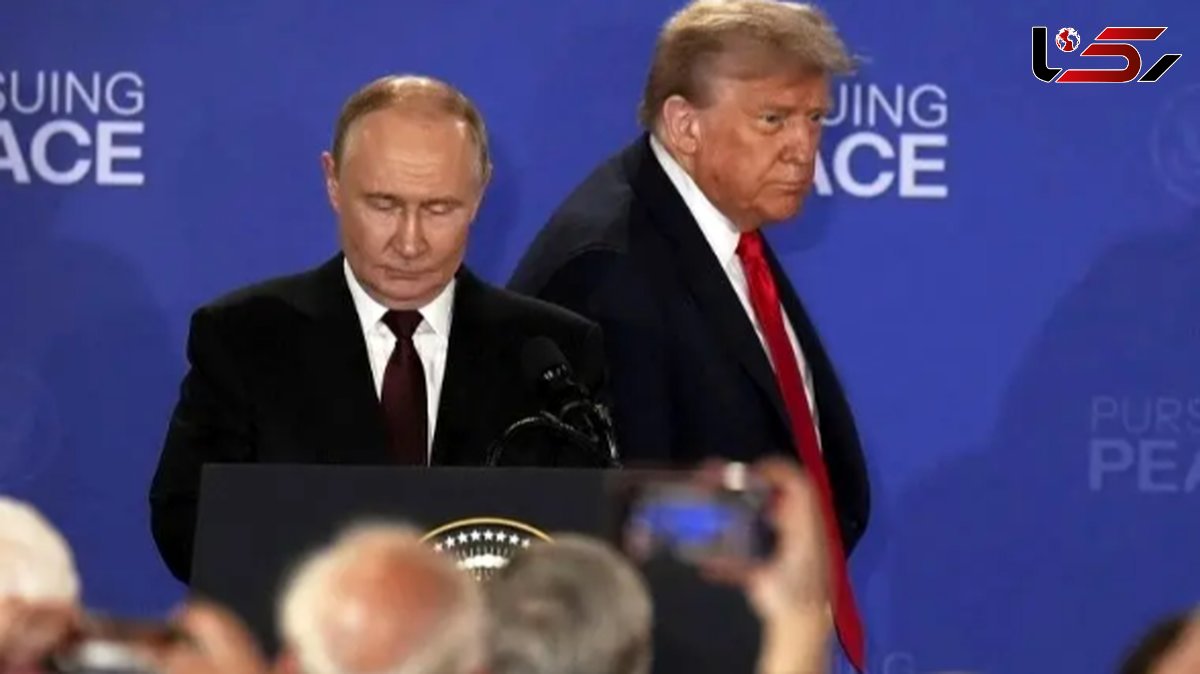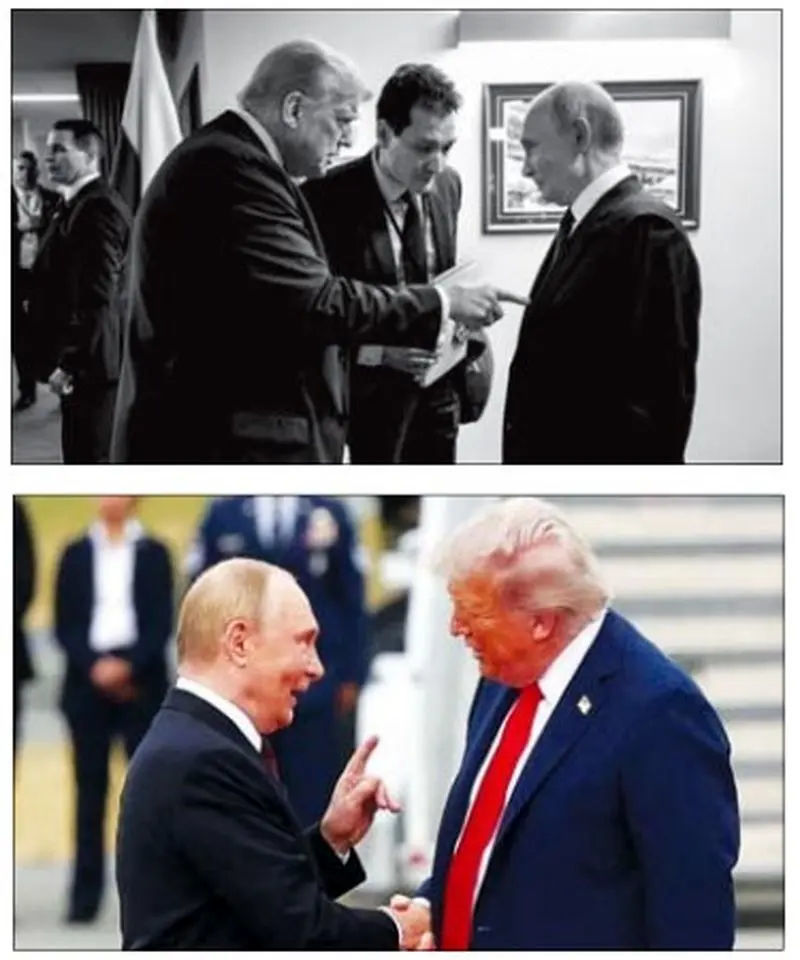Hidden Secrets in Two Images of the Putin-Trump Meeting + Photos
Rokna Political Desk: The analysis of the meeting between Trump and Putin in Alaska from various perspectives reveals hidden secrets regarding the gestures and behavioral dynamics of the two global leaders. The central question remains: will this meeting contribute to securing world peace, or will it pave the way for a new crisis?

The negotiations between Putin and Trump in Alaska can be analyzed from multiple dimensions. Certainly, the United States and Russia are the first and second countries in the world in terms of military power (their ranking is not of primary concern here), and therefore the meeting of these two leaders can play a decisive role in securing global peace. Any involvement of these two countries (from any front, in any place, at any level, and through any proxy force) could ignite a devastating and all-consuming war. For this reason, almost all political circles worldwide have regarded any negotiations and rapprochement between the two countries as a positive move and have supported it.
At the same time, however, many political observers have been unable to obtain precise information about what transpired between the two leaders. From the very beginning, numerous debates surfaced—from the choice of location for the meeting to the manner of answering journalists’ questions, and even the menu and security arrangements—all of which became points of contention. Nevertheless, many questions remain unanswered, and no one can provide precise responses.
On the other hand, although numerous photographs of this historic meeting have been captured, two particular images drew the most attention. Here, it might appear that through these images one could approach the content of the leaders’ discussions. The photographs, by employing their indicative signs, seek to interpret the world. The concept of an image or pictorial sign refers to lines and markings inscribed on a two-dimensional surface that can be considered a representation of scenes from the conventional world as perceived by us.
There is no doubt that the initial encounter with a photograph can shape the primary perception of the audience. In subsequent stages, deeper analysis according to the subject of the image, the moment and place of the narrative’s realization, and other matters surrounding the world of the image is reached. The discussion concerns what is not directly evident within the work itself but is connected to another realm. For example, writing belongs to the system of symbolic semiotics, whereas imagery belongs to the system of iconic signs.
A photograph, naturally, always pursues its referent, confirming its presence and its “being there.” The photograph demands the living engagement of its viewer in the moment of its presence. In 1938, Heidegger, in a lecture, remarked that what distinguishes the modern era from earlier periods is that the world has altogether turned into an image. Were he alive today, how would he respond to our immersion in images and visual messages?
The audience’s presence is usually accompanied by a form of pre-understanding, which it shares with what is seen and experienced in the photograph. Official and state-run media are invariably obliged to support Russia and to directly criticize the West; to such an extent that no one even dares to call Putin’s horse an old nag. This pre-understanding must be affirmed and shared with the audience through the related images.
Thus, in our country, the photograph that attracted the most attention is the one where Trump is pointing his finger toward Putin, seemingly reproaching him. Trump’s finger is directed at Putin’s stomach, symbolizing culpability. Putin, holding a booklet in his hand, appears like a guilty student caught in the grip of the school principal.
Trump, having nothing in his hand to place him in a position similar to Putin’s, stands apart. Yet, in a meeting at this level, all roles, gestures, behaviors, and movements of the leaders are usually rehearsed multiple times. The dynamics of movement are such that at any moment the opposite situation could also emerge, and now photographers from the other side captured the instant placing Trump in the role of reprimanding Putin. For this reason, those who were pleased by the first image naturally experienced disappointment upon seeing the second. This results from neglecting the context and background and from disregarding deeper visual and semiotic systems.
Theorists have considered the distinction between denotation and connotation useful, yet the difficulty lies in the impossibility of drawing a clear and definitive line between the two. The reason is that denotative meaning itself is a kind of connotative meaning. Based on this, each individual, depending on their culture, derives different connotations from a photograph, and it is from within these connotations that the connotative meaning emerges. Therefore, the denotative meaning extracted from a work is not necessarily the one decoded by every culture or citizen. Roland Barthes distinguished between two mechanisms termed “primary” and “secondary.”

The primary mechanism consists of three processes: special effects, gestures, and objects; while the secondary mechanism includes three processes: aestheticization, artistic rendering, and harmonization. In the first three processes, connotative meaning arises through changes or modifications to reality itself, that is, to the denotative message. However, as mentioned, the world has become an “image,” and then the “image” of the real world entered the world of symbols, with pictorial signifiers becoming multiple signifieds. Now images have effectively rendered the world more ambiguous. It was not without reason that Roland Barthes remarked that the image is far more aggressive than writing.
He likely meant that text, rather than containing multiple meanings itself, realizes plurality of meaning. The photograph of mutual reproach between Putin and Trump, before reflecting or representing reality, “signifies” it, pleasing both sides of the matter; for the power of signification often exceeds that of representation. Thus, one cannot derive much about the content of their negotiations solely from images of the leaders’ meeting.
Send Comments